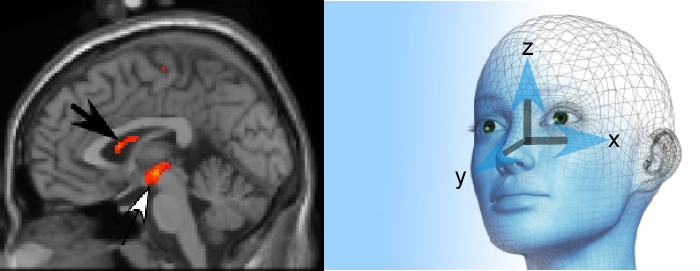
VTA and Caudate group results_____________________Organization of points in brain (x,y,z)
White arrow: VTA
Black arrow: caudate/striatum
The results of our first study were stunning. Foremost, all of our love-struck men and women showed activity in two specific regions: 1) the Ventral Tegmental Area or VTA, located near the base of the brain; and 2) the Caudate Nucleus, a region of the Striatum - a multi-part brain area located a bit higher in the head. The Caudate integrates your “rush” of romantic passion with your complex emotions and thoughts about your beloved. The white arrow shows the VTA . The black arrow in the picture above shows the Caudate.
Striatum= Caudate, Putamen, accumbens. See where these are in the brain video.
The Ventral Tegmental Area is part of the brain’s Reward System, the neural circuits that generate feelings of pleasure and motivation. It is this brain region that manufactures dopamine, the brain chemical that gives you the energy, focus, ecstasy and the drive to seek, find and keep a sweetheart. Remarkably, the VTA also becomes active when one feels the rush of cocaine.
One of our conclusions is that the state of romantic love is a natural addiction-- we are addicted to another person when we are in love, but it's a very good addiction to have when the relationship is a good one.
The Caudate is also part of the Reward System. It lies in the middle of your head and looks a bit like a medium-sized shrimp--two shrimp, actually, as each hemisphere of the brain has its own Caudate. The caudate and other regions of the striatum have connections to the cerebral cortex, the top, muti-folded layer of the brain with which we do our thinking. It has connections, too, with memory areas and with the VTA. Indeed, the Caudate integrates data from many brain regions. No part of the brain ever works alone, and love is no exception. We speculate that as all of your thoughts, feelings and motivations associated with romantic love assemble in the caudate: boom! You experience intense romantic passion.
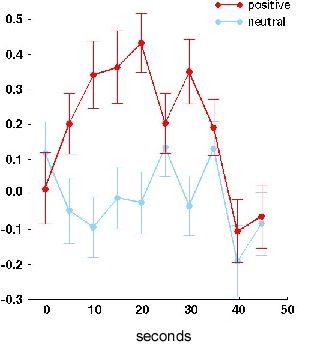
On the graph, the red line tracks the flow of blood into a small area of the Caudate Nucleus during the 30 seconds that participants looked at the Positive photo of their sweetheart, and over the next 20 seconds when they were counting back by 7s. Note that the blood flow goes up over 30 seconds and then drops down. The blue line tracks the flow of blood into the same brain region as participants looked at the Neutral photo. Notice that it first goes down a little and the curve is totally different from the red one. This is a “tool” we use to check our results.
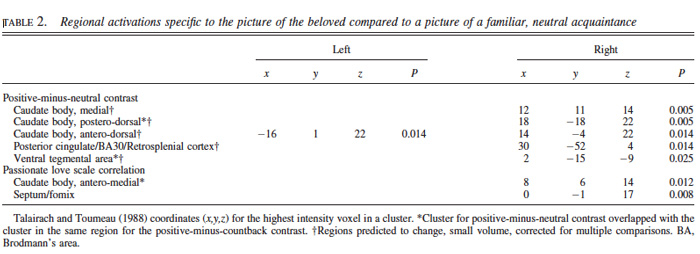
Table 2 lays out the exact coordinates of all the activated brain regions in the three-dimensional space of the head (x,y,z). These coordinates are measured in millimeters. Using these standard x,y,z coordinates, researchers can compare the results of their studies.
To be sure their results are accurate, scientists always need to replicate their findings. In our case, we (and other scientists) have replicated these basic findings in five published studies. We carried out two of the studies (See Resources). In a third, currently unpublished study about newly-weds, we replicated the findings again.
The activation of the VTA and striatum supported our two primary hypotheses: first, that intense romantic love is associated with the Reward System that runs on dopamine; second, that romantic love is not an emotion or even a series of emotions (although we feel many emotions when we are in love). Instead, it is primarily a drive, a motivation to win a prize: a preferred mating partner.


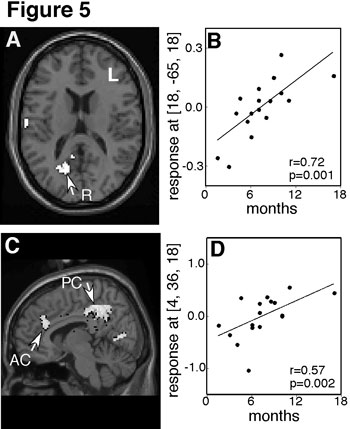
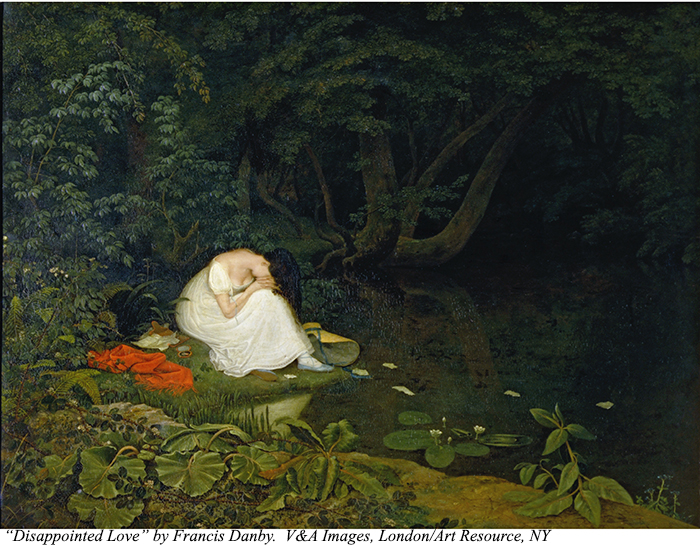

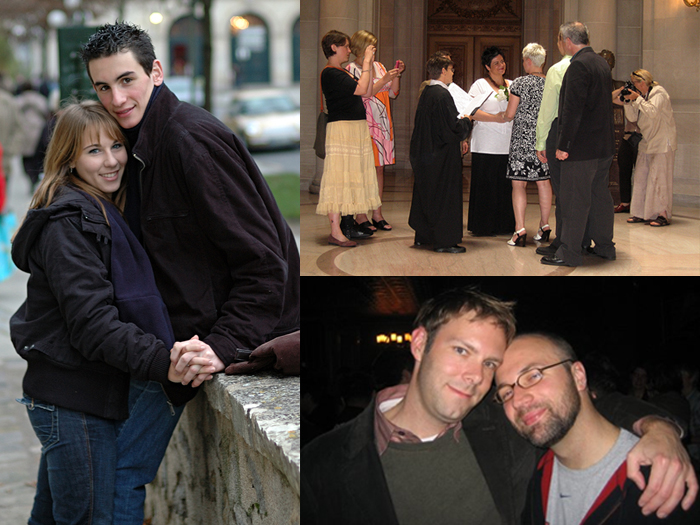

I find your research to be very interesting. Thank you!